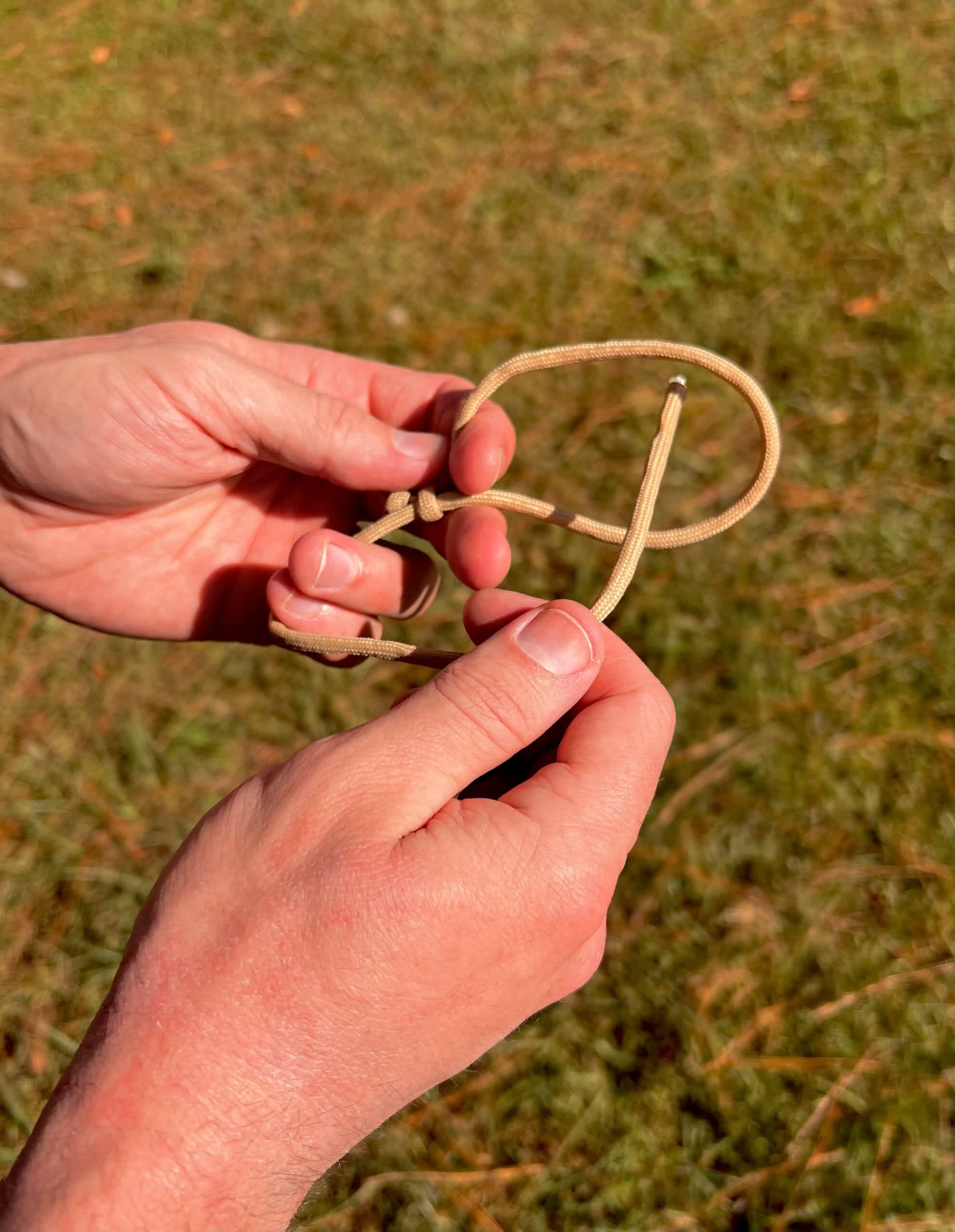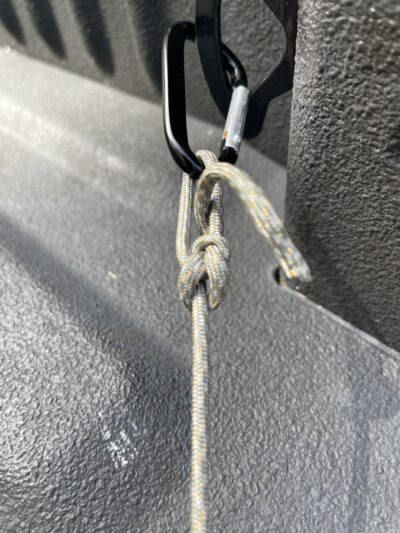OutdoorHub Knot Tying Series: A How-To on useful knots for the outdoors
Taylor Hutchinson 10.09.23

Whether camping, hunting, or fishing; managing rope, line, and cordage is essential when venturing outdoors. Learning a few knots beforehand is a valuable skill set to have in the toolbox. The versatility it affords supplements the lack of additional resources that aren’t always available. Campsites aren’t always perfectly set up for the tent that is chosen. Gear breaks or wears out at the worst moments. Carrying gear doesn’t need to be limited to what fits inside a backpack. Necessity is the mother of invention, and nature does not always allow us to pick the time or situation in which the need arises. The six P’s of planning are our guide to acquiring essential skills before requiring them. Prior proper planning prevents poor performance. These are a few essential knots that can be adapted for any situation.
Canadian Jam Knot
The first knot is the most versatile in this series. The Canadian Jam Knot derives its name from the two knots that jam together, forming a tight wrap around an object. This is best for wrapping firewood together, binding a cross brace for a structure, or binding objects together for repairs. Unlike a constrictor knot, the jam knot can be loosened without untying the knot . Tying the knot is fairly basic. First, start by wrapping the object or objects to be bound together. Tie a standard overhand knot a few inches below the first tag end. Do not tighten this overhand knot. Next, near the end of that same tagline, tie another overhand knot. This second overhand can be cinched down. Now take the 2nd tag end of the cordage and feed that through the hole made by the first overhand knot. Pull tension and the knots will come together. The trick to unbind this knot is to pull the knot in the opposite direction in which it was tightened.

The Bowline
This next knot is the most trusted and crucial knot one can learn. The Bowline knot strengthens when it is under load. This knot is for when one needs to make a loop at the end of their line. It is so secure that it is recommended by the FAA to tie down small aircraft. Various uses for the knot outdoors are beneficial for climbers, campers, sailors, and many others. The knot seems complex to tie when looking at the finished product. However, many search and rescue professionals can tie it with one hand. Starting the knot is simple, imagine back in the day when we used keys to turn on our cars. Now turn the car off and use that same motion to create a loop in the main line. Take the free tag end and pass under and out of the loop. Take the tag end and pass it around the main line and then back down the loop. Be sure to hold the tag end and pull the main line to tighten down. If this is done correctly, one can observe a “U” shape in the knot. When not under load, this knot can be shaken loose. Learning this knot, one can trust that their hammock, boat, or bear bag isn’t going anywhere.

Taut Line Hitch knot
The final knot in our series is adjustable and best used for lines that need variable tension. This tension is maintained by sliding the hitch up and down the main line to loosen or tighten the loop size. By this adjustment of the loop size, one can shorten or lengthen the main line. Named the Taut Line Hitch knot, it is best used for securing lines when pitching tents or creating adjustable moorings when tying off a boat during changing tides. The more common use for the every day is securing items and cargo on vehicles when ratchet straps aren’t available or are overkill. Start by wrapping the main line around the load-bearing object, hook, or tree. Take the tag end and, from the bottom, wrap it around the main line twice. From here take the end of the tag end and pass it underneath the line, making the first wrap. Continue under and then over the mainline. Pass the tag down through the loop that was just created in front of the line wrapping around the object. Adjust by pulling the loop end towards or away from the knot.

Practicing these with some 550 cord or nylon rope makes them easy to memorize and recall when needed. Think about keeping some spare 550 cord around to practice while watching TV or just to pass the time is a good way to ingrain these skills into the synapses of the brain. Knowing which knot to use is not limited to what was covered here. Experience gives over to wisdom, and wisdom comes in time. Get outside to find what wisdom it has to offer.

